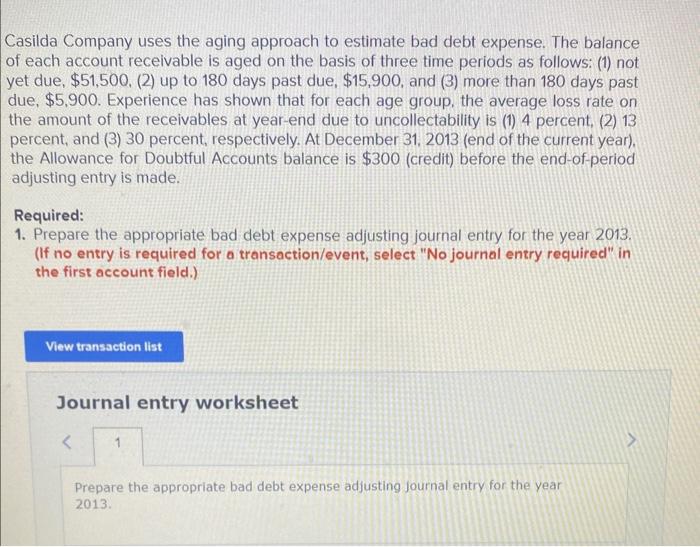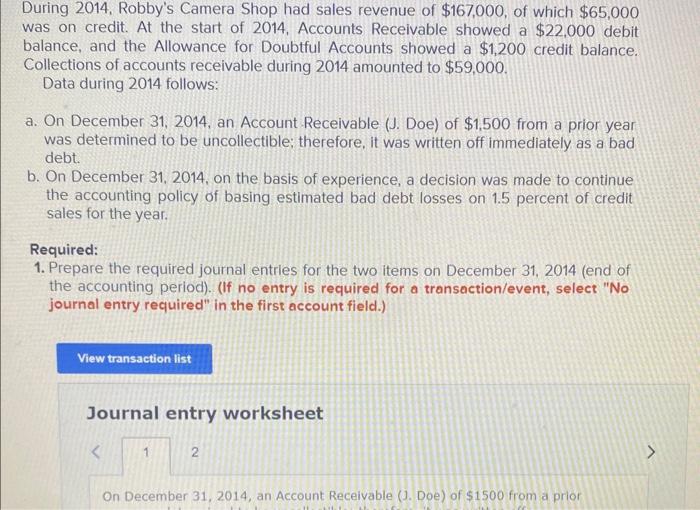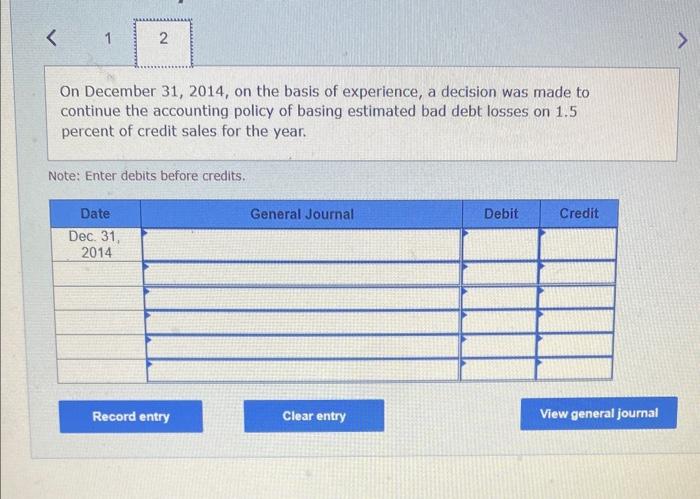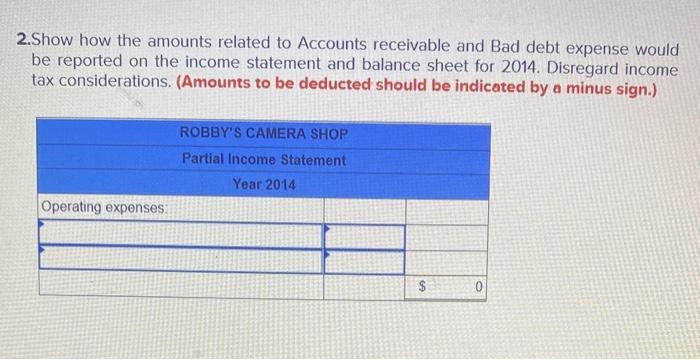Casilda Company uses the aging approach to estimate bad debt expense. The balance of each account receivable is aged on the basis of three time periods as follows: (1) not yet due, $51,500, (2) up to 180 days past due, $15,900, and (3) more than 180 days past due, $5,900. Experience has shown that for each age group, the average loss rate on the amount of the receivables at year-end due to uncollectability is (1) 4 percent, (2) 13 percent, and (3) 30 percent, respectively. At December 31, 2013 (end of the current year). the Allowance for Doubtful Accounts balance is $300 (credit) before the end-of-period adjusting entry is made. Required: 1. Prepare the appropriate bad debt expense adjusting journal entry for the year 2013. (If no entry is required for a transaction/event, select "No journal entry required" in the first account field.) Journal entry worksheet Prepare the appropriate bad debt expense adjusting journal entry for the year 2013. 2. Show how the various accounts related to accounts receivable should be shown on the December 31. 2013, balance sheet. (Amounts to be deducted should be indicated by a minus sign.) During 2014, Robby's Camera Shop had sales revenue of $167,000, of which $65,000 was on credit. At the start of 2014. Accounts Receivable showed a $22,000 debit balance, and the Allowance for Doubtful Accounts showed a $1,200 credit balance. Collections of accounts receivable during 2014 amounted to $59,000. Data during 2014 follows: a. On December 31, 2014, an Account Receivable (J. Doe) of $1,500 from a prior year was determined to be uncollectible; therefore, it was written off immediately as a bad debt. b. On December 31, 2014, on the basis of experience, a decision was made to continue the accounting policy of basing estimated bad debt losses on 1.5 percent of credit sales for the year. Required: 1. Prepare the required journal entries for the two items on December 31, 2014 (end of the accounting period). (If no entry is required for a transaction/event, select "No journal entry required" in the first account field.) Journal entry worksheet 2 On December 31,2014 , an Account Receivable (J. Doe) of $1500 from a prior On December 31,2014 , on the basis of experience, a decision was made to continue the accounting policy of basing estimated bad debt losses on 1.5 percent of credit sales for the year. Note: Enter debits before credits. 2.Show how the amounts related to Accounts receivable and Bad debt expense would be reported on the income statement and balance sheet for 2014. Disregard income tax considerations. (Amounts to be deducted should be indicated by a minus sign.)












